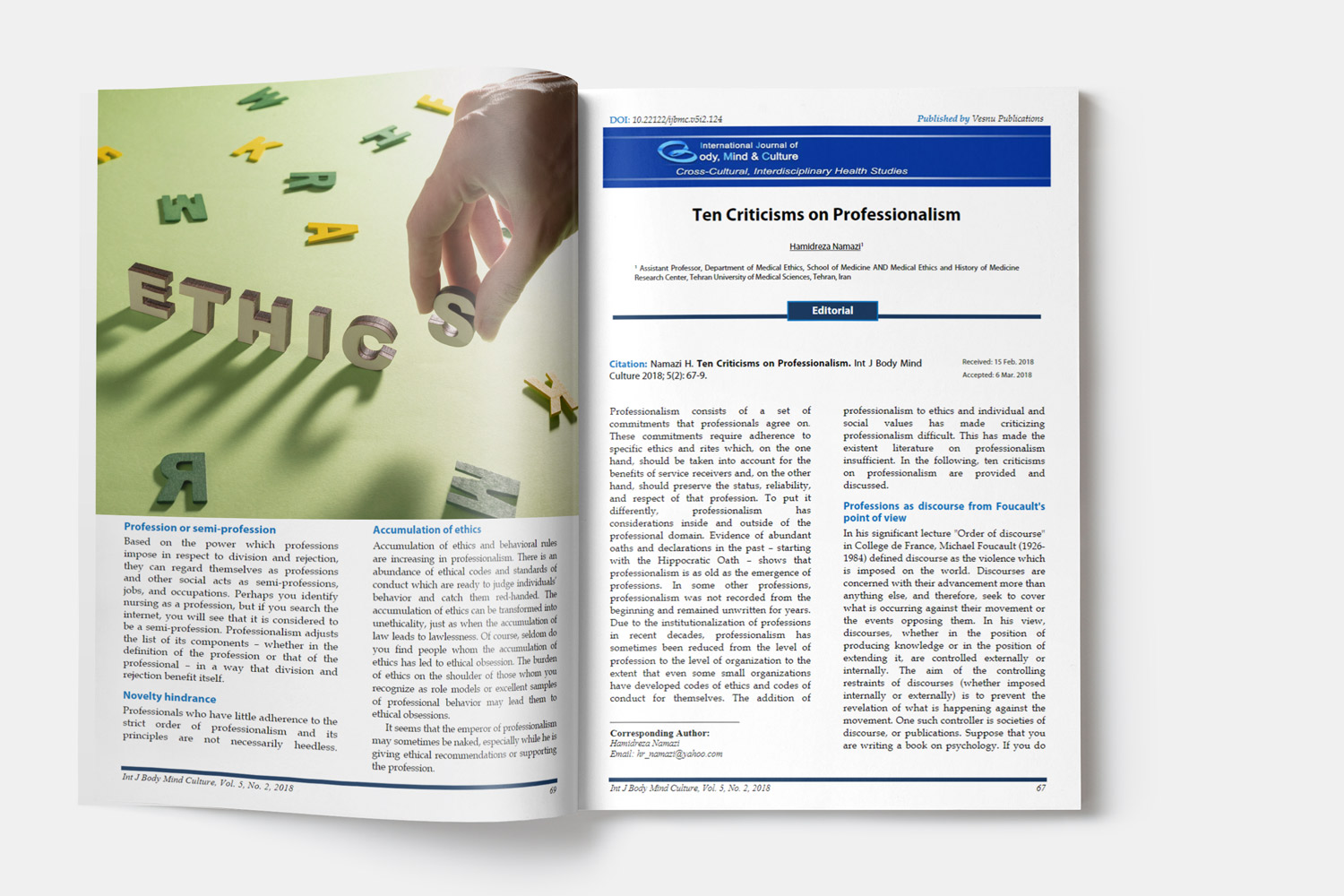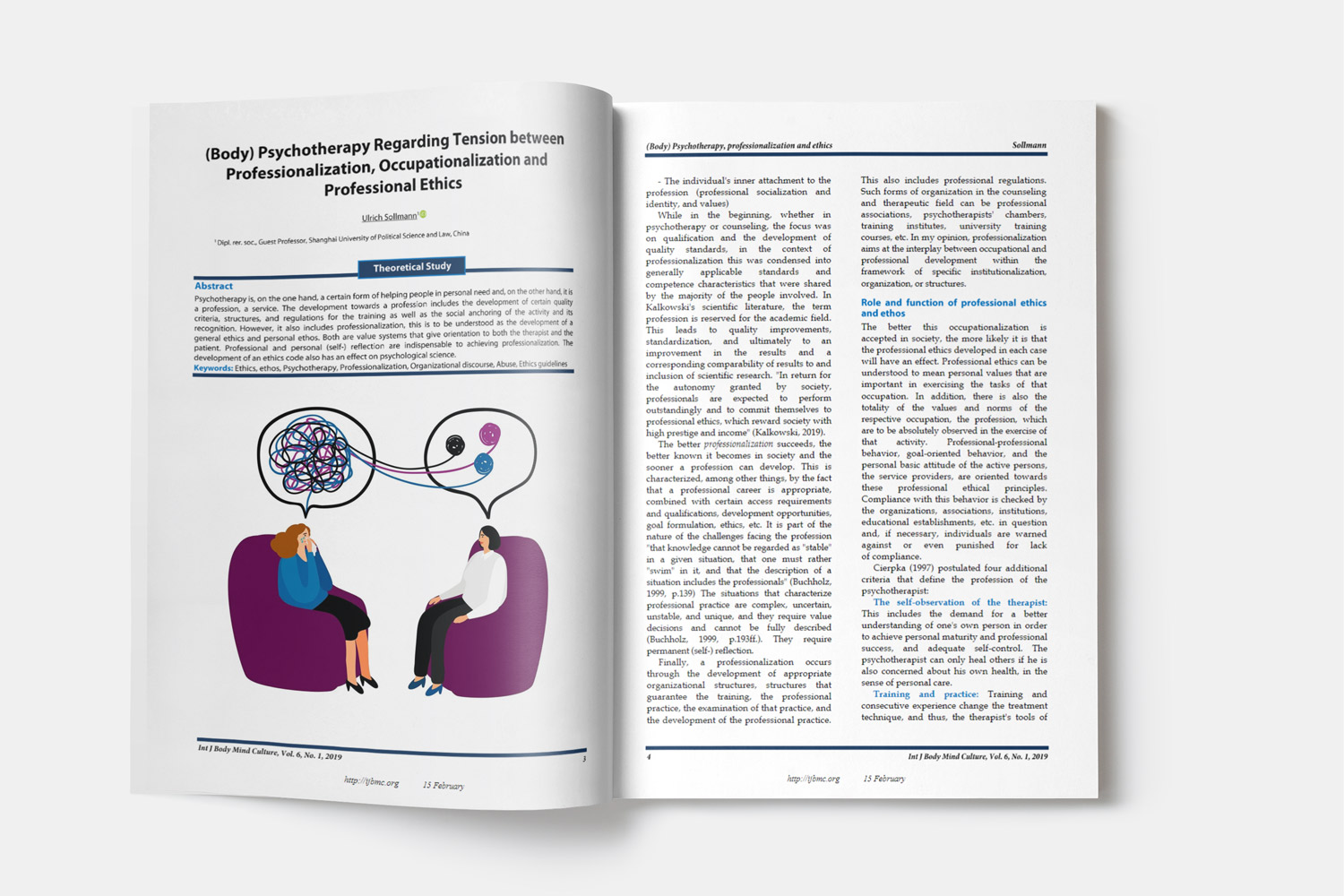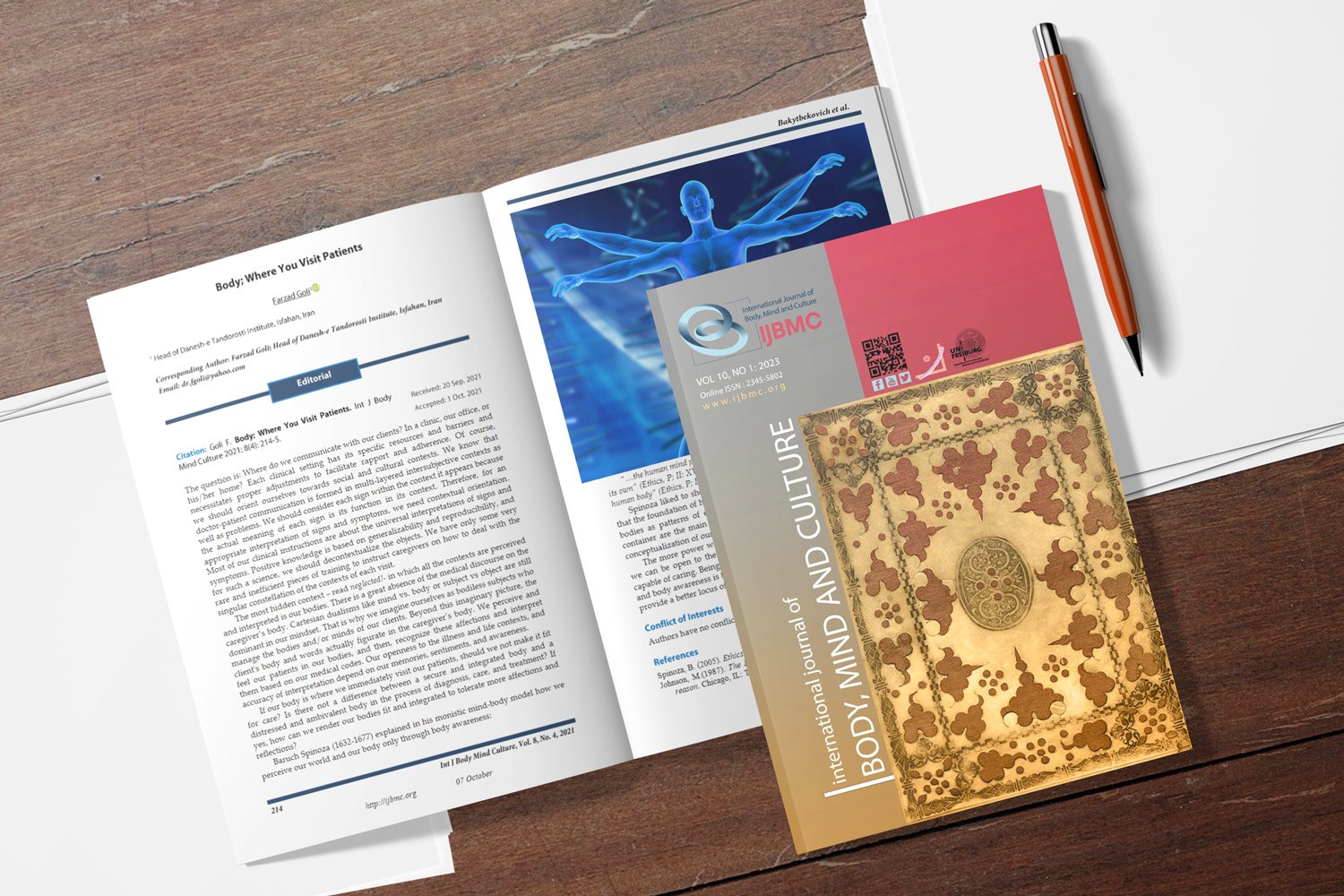A Comparison of Body Dysmorphic Disorder in Students with Narcissistic, Histionic Personality Patterns and Normal People
Body dysmorphic disorder in students
Downloads
Background: People with body dysmorphic disorder (BDD) have been hypothesized to have schizoid, narcissistic, and obsessional identity characteristics and to be touchy, independent, perfectionistic, and unreliable. Thus, the present study compared BDD in students with narcissistic, histrionic, and normal personality patterns.
Methods: The research method was causal-comparative and cross-sectional. The statistical population of the study included all the students of Ardabil Azad University in the second semester of the 2014-2015 academic year. Using the random cluster method, 600 students were selected and completed the Body Shape Questionnaire (BSQ-34; Cooper et al., 1987), and the narcissistic and histrionic subscales of the Millon Clinical Multiaxial Inventory-III (MCMI-III). The collected data were analyzed using univariate analysis of variance (ANOVA) in SPSS software.
Results: The results showed that there was a significant difference in BDD score between students with narcissistic, histrionic, and normal personality patterns, and the mean BDD scores in the two groups of students with narcissistic and histrionic personality patterns were higher than that in those with normal personality patterns (P < 0.001).
Conclusion: It can be stated that these components are among the important influencing variables in personality patterns, so it is necessary to pay attention to these components in the prevention and successful treatment of the affected people.
Downloads
Al Ghadeer, H. A., AlAlwan, M. A., AlAmer, M. A., Alali, F. J., Alkhars, G. A., Alabdrabulrida, S. A. et al. (2021). Impact of self-esteem and self-perceived body image on the acceptance of cosmetic surgery. Cureus, 13(10), e18825. doi:10.7759/cureus.18825 [doi]. Retrieved from PM:34804682
Bozzatello, P., Garbarini, C., Rocca, P., & Bellino, S. (2021). Borderline personality disorder: risk factors and early detection. Diagnostics.(Basel.), 11(11). doi:diagnostics11112142 [pii];diagnostics-11-02142 [pii];10.3390/diagnostics11112142 [doi]. Retrieved from PM:34829488
Cooper, P. J., Taylor, M. J., Cooper, Z., & Fairbum, C. G. (1987). The development and validation of the body shape questionnaire. Int.J.Eat.Disord, 6(4), 485-494. doi:10.1002/1098-108X(198707)6:4<485::AID-EAT2260060405>3.0.CO;2-O [doi].
Czarna, A. Z., Zajenkowski, M., Maciantowicz, O., & Szymaniak, K. (2021). The relationship of narcissism with tendency to react with anger and hostility: The roles of neuroticism and emotion regulation ability. Curr Psycho, 40(11), 5499-5514. doi:10.1007/s12144-019-00504-6 [doi].
De Fruyt, F., & De, Clercq, B. (2014). Antecedents of personality disorder in childhood and adolescence: toward an integrative developmental model. Annu.Rev.Clin.Psychol., 10, 449-476. doi:10.1146/annurev-clinpsy-032813-153634 [doi]. Retrieved from PM:24471374
Gawda, B., & Czubak, K. (2017). Prevalence of personality disorders in a general population among men and women. Psychol.Rep, 120(3), 503-519. doi:10.1177/0033294117692807 [doi]. Retrieved from PM:28558606
Gazize, S., & Gharadaghi, A. (2013). Comparing pathological symptoms of mental disorder, personality disorder of clusters B and C, and body image in cosmetic surgery applicants with those in non-applicants. Asian J Med Pharm Res, 3(4), 139-147.
Golshani, S., Mani, A., Toubaei, S., Farnia, V., Sepehry, A. A., & Alikhani, M. (2016). Personality and psychological aspects of cosmetic surgery. Aesthetic.Plast.Surg., 40(1), 38-47. doi:10.1007/s00266-015-0592-7 [pii];10.1007/s00266-015-0592-7 [doi]. Retrieved from PM:26695949
Graboyes, E. M., Hill, E. G., Marsh, C. H., Maurer, S., Day, T. A., Hornig, J. D. et al. (2020). Temporal trajectory of body image disturbance in patients with surgically treated head and neck cancer. Otolaryngol.Head Neck.Surg., 162(3), 304-312. doi:10.1177/0194599819898861 [doi]. Retrieved from PM:31906788
Gunay-Oge, R., Pehlivan, F. Z., & Isikli, S. (2020). The effect of positive childhood experiences on adult personality psychopathology. Pers.Individ.Differ, 158, 109862. doi:10.1016/j.paid.2020.109862 [doi].
Higgins, S., & Wysong, A. (2018). Cosmetic surgery and body dysmorphic disorder - an update. Int J Womens.Dermatol., 4(1), 43-48. doi:S2352-6475(17)30080-1 [pii];10.1016/j.ijwd.2017.09.007 [doi]. Retrieved from PM:29872676
Hossin Khanzade, A. A., Rasouli, H., & Kousha, M. (2019). The effectiveness of play therapy on visual short-term memory and cognitive flexibility in children with attention deficit/hyperactivity disorder. Journal of Psychological Studies, 14(4), 55-72.
Jennifer H.French, & Sangam Shrestha. (2021). Histrionic Personality Disorder. Treasure Island, FL: StatPearls Publishing.
Jiao, W. Y., Wang, L. N., Liu, J., Fang, S. F., Jiao, F. Y., Pettoello-Mantovani, M. et al. (2020). Behavioral and Emotional Disorders in Children during the COVID-19 Epidemic. J Pediatr, 221, 264-266. doi:S0022-3476(20)30336-X [pii];10.1016/j.jpeds.2020.03.013 [doi]. Retrieved from PM:32248989
Khodadadi, M. , Mashhadi, A., & Amani, H. (2014). Simple Stroop Sofware. Tehran, Iran: Institute for Behavioral & Cognitive Sciences.
Kucur, C., Kuduban, O., Ozturk, A., Gozeler, M. S., Ozbay, I., Deveci, E. et al. (2016). Psychological evaluation of patients seeking rhinoplasty. Eurasian.J Med, 48(2), 102-106. doi:eajm-48-2-102 [pii];10.5152/eurasianjmed.2015.103 [doi]. Retrieved from PM:27551172
Loron, A. M., Ghaffari, A., & Poursafargholi, N. (2018). Personality disorders among individuals seeking cosmetic botulinum toxin type A (BoNTA) injection, a Cross-sectional study. Eurasian.J Med, 50(3), 164-167. doi:eajm-50-3-164 [pii];10.5152/eurasianjmed.2018.17373 [doi]. Retrieved from PM:30515036
Mulkens, S., Bos, A. E., Uleman, R., Muris, P., Mayer, B., & Velthuis, P. (2012). Psychopathology symptoms in a sample of female cosmetic surgery patients. J Plast.Reconstr.Aesthet.Surg., 65(3), 321-327. doi:S1748-6815(11)00566-3 [pii];10.1016/j.bjps.2011.09.038 [doi]. Retrieved from PM:22030078
Novais, F., Araujo, A., & Godinho, P. (2015). Historical roots of histrionic personality disorder. Front.Psychol., 6, 1463. doi:10.3389/fpsyg.2015.01463 [doi]. Retrieved from PM:26441812
Papageorgiou, K. A., Denovan, A., & Dagnall, N. (2019). The positive effect of narcissism on depressive symptoms through mental toughness: Narcissism may be a dark trait but it does help with seeing the world less grey. Eur Psychiatry, 55, 74-79. doi:S0924-9338(18)30187-1 [pii];10.1016/j.eurpsy.2018.10.002 [doi]. Retrieved from PM:30390475
Pauze, A., Plouffe Demers, M. P., Goulet, J., Furumoto-Deshaies, H., Fiset, D., Saint-Amour, D. et al. (2020). Use of reverse correlation to reveal body image disturbance association with Orthorexia nervosa. Journal of Vision, 20(11), 238. doi:10.1167/jov.20.11.238 [doi].
Qian, H., Ling, Y., Wang, C., Lenahan, C., Zhang, M., Zheng, M. et al. (2021). A Correlative study between personality traits and the preference of site selection in cosmetic treatment. Front.Psychiatry, 12, 648751. doi:10.3389/fpsyt.2021.648751 [doi]. Retrieved from PM:34093268
Quittkat, H. L., Hartmann, A. S., Dusing, R., Buhlmann, U., & Vocks, S. (2019). Body dissatisfaction, importance of appearance, and body appreciation in men and women over the lifespan. Front.Psychiatry, 10, 864. doi:10.3389/fpsyt.2019.00864 [doi]. Retrieved from PM:31920737
Ramos, P., Moreno-Maldonado, C., Moreno, C., & Rivera, F. (2019). The role of body image in internalizing mental health problems in spanish adolescents: An analysis according to sex, age, and socioeconomic status. Front.Psychol., 10, 1952. doi:10.3389/fpsyg.2019.01952 [doi]. Retrieved from PM:31507499
Sadeghi K. (2023). , Ahmadi S M, Rezaei M, Veisy F, Raeesi F, et al. Psychometric properties of the 34-item Body Shape Questionnaire in students. J Kermanshah Univ Med Sci. 2014;18(6):e74083. doi:10.22110/jkums.v18i6.1886 [doi].
Sadock, B. J., Kaplan, H. I., & Sadock, V. A. (2007). Kaplan & sadock's synopsis of psychiatry: Behavioral sciences/clinical psychiatry (9th ed.). Philadelphia, PA: Lippincott Williams & Wilkins.
Schalkwijk, F., Luyten, P., Ingenhoven, T., & Dekker, J. (2021). Narcissistic personality disorder: Are psychodynamic theories and the alternative dsm-5 model for personality disorders finally going to meet? Front.Psychol., 12, 676733. doi:10.3389/fpsyg.2021.676733 [doi]. Retrieved from PM:34335390
Sperandeo, R., Messina, G., Iennaco, D., Sessa, F., Russo, V., Polito, R. et al. (2019). What does personality mean in the context of mental health? a topic modeling approach based on abstracts published in pubmed over the last 5 years. Front.Psychiatry, 10, 938. doi:10.3389/fpsyt.2019.00938 [doi]. Retrieved from PM:31998157
Tomas-Aragones, L., & Marron, S. E. (2016). Body image and body dysmorphic concerns. Acta Derm.Venereol., 96(217), 47-50. doi:10.2340/00015555-2368 [doi]. Retrieved from PM:27283435
Wever, C. C. C., Wever, A. M. E. A., & Constantian, M. (2020). Psychiatric disorders in facial plastic surgery. Facial.Plast.Surg.Clin.North Am., 28(4), 451-460. doi:S1064-7406(20)30057-2 [pii];10.1016/j.fsc.2020.06.003 [doi]. Retrieved from PM:33010863
Zojaji, R., Arshadi, H. R., Keshavarz, M., Mazloum, F. M., Golzari, F., & Khorashadizadeh, M. (2014). Personality characteristics of patients seeking cosmetic rhinoplasty. Aesthetic.Plast.Surg., 38(6), 1090-1093. doi:10.1007/s00266-014-0402-7 [doi]. Retrieved from PM:25270095
Copyright (c) 2023 International Journal of Body, Mind and Culture

This work is licensed under a Creative Commons Attribution-NonCommercial 4.0 International License.















